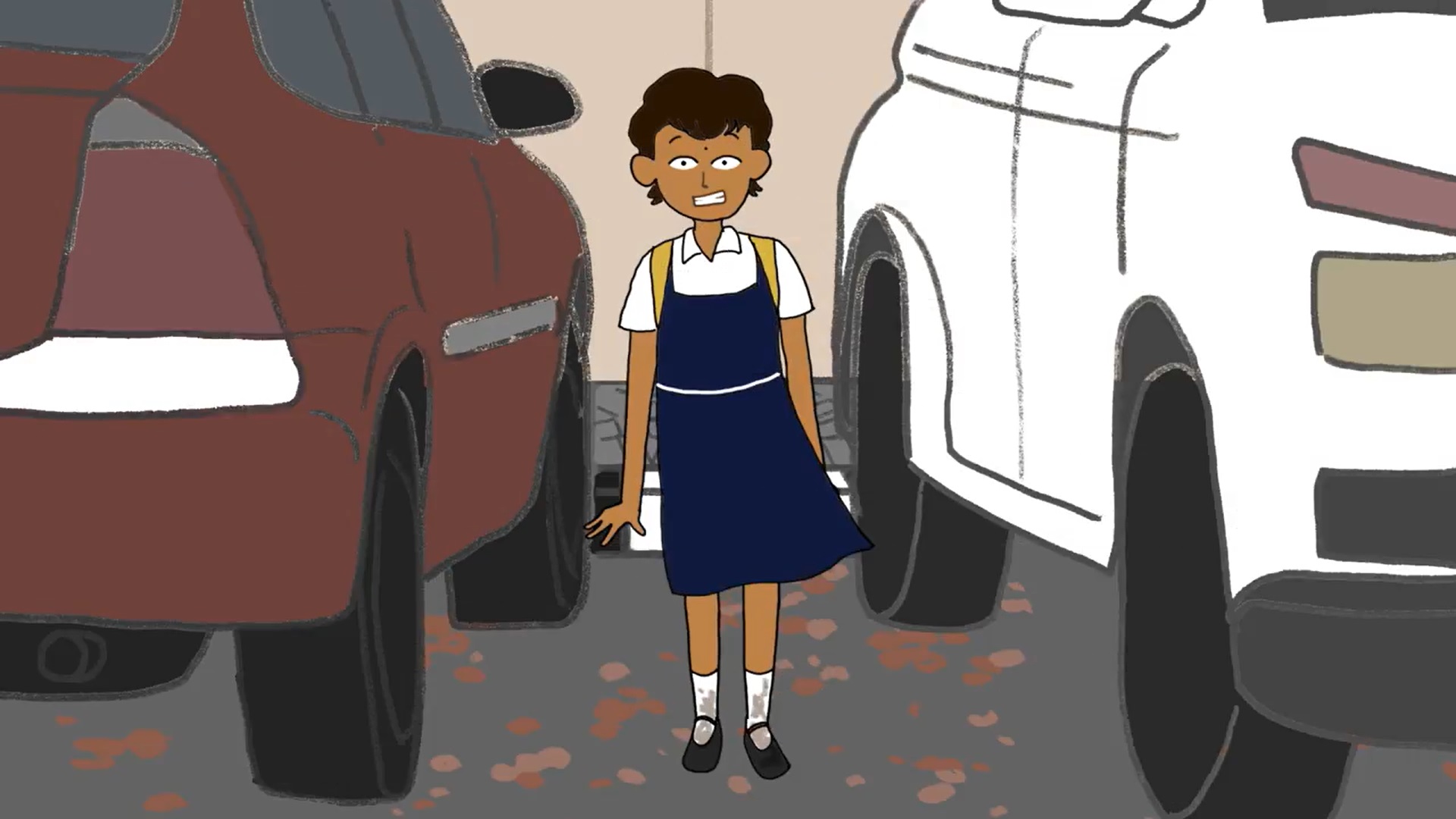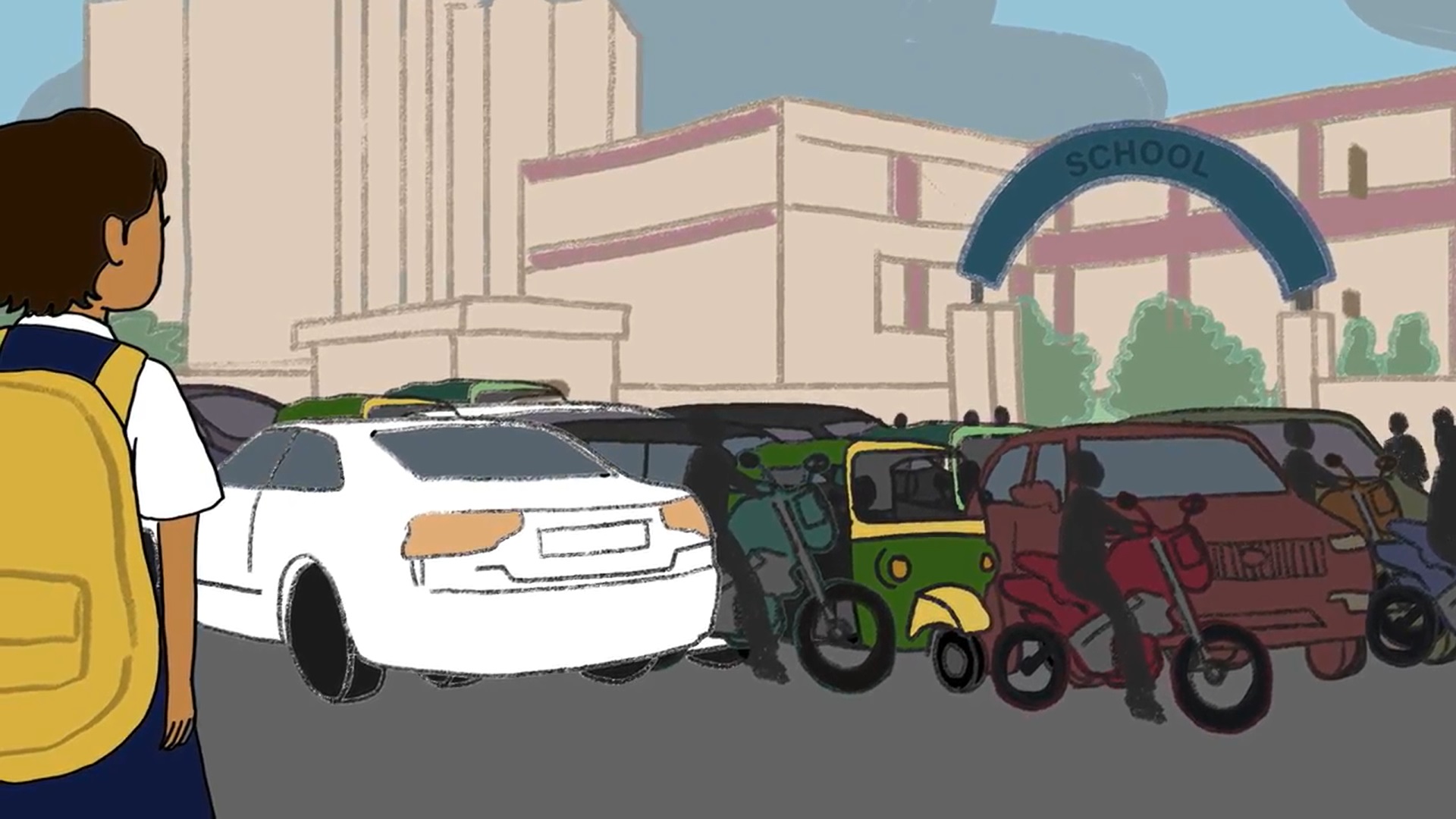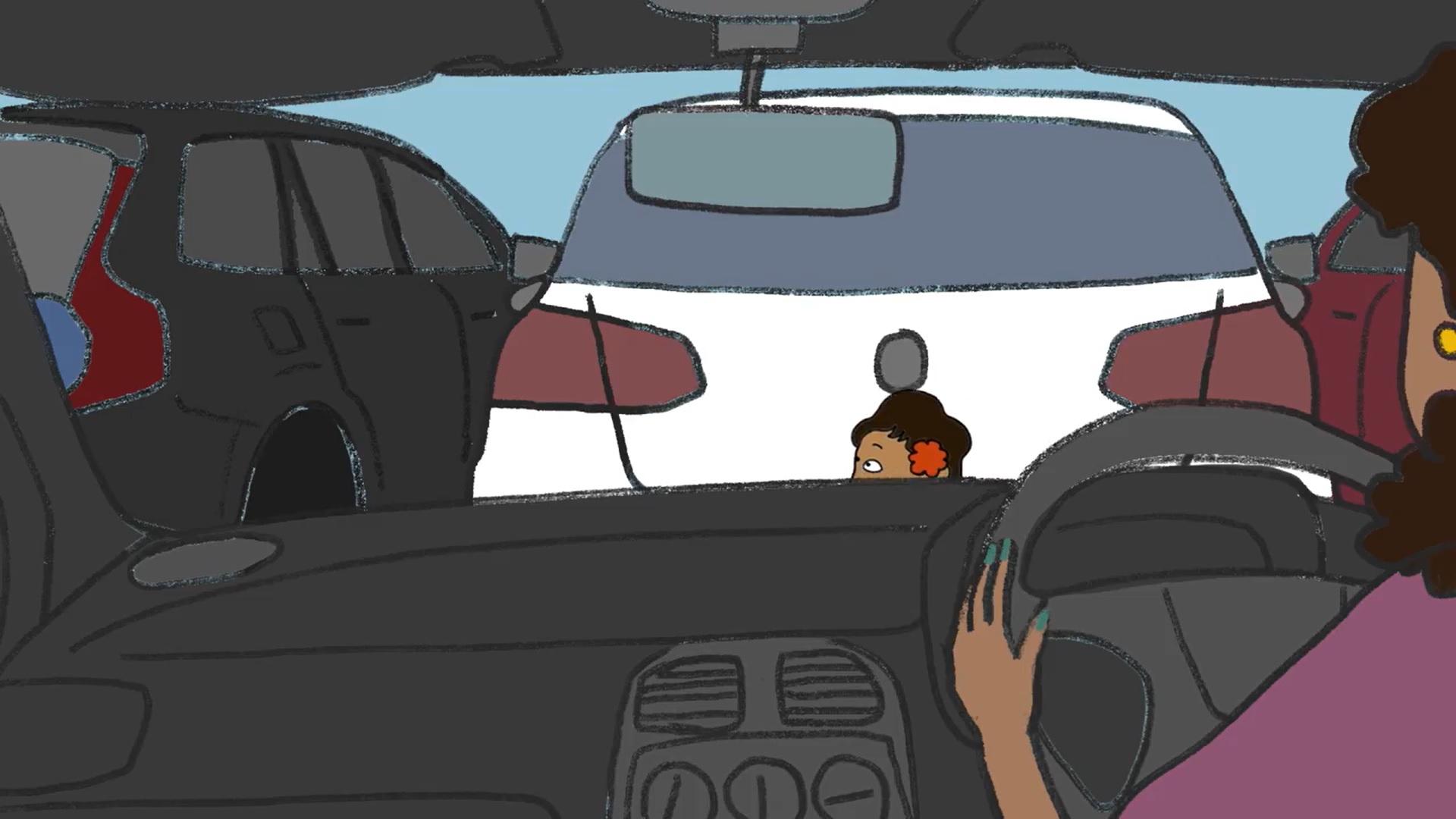Building Safe School Zones: A Collective Responsibility
by e -
Indian households often feature an older person with fond memories of walking to school, replete with eating golas (flavored ice cones), climbing trees and playing gilli danda (a popular children’s game) with friends. Today, most parents in urban India would not dream of letting their child walk to school alone, owing to speeding vehicles and the lack of safe footpaths. Even in cases where the school is within walking distance, most parents tend to drop off the child in a private or shared vehicle. But for many children, like 10-year-old Rinku, walking is the only option.
Rinku Goes to School: A Story About Why Every Child Needs a #SafeSchoolZone
Navigating potholes and dodging hawkers, Rinku’s everyday commute to school is filled with obstacles. In the absence of clear and continuous footpaths, she is forced to walk on the road –running the constant risk of coming into conflict with speeding vehicles.

There are no clear indications around the school alerting drivers to the 25 km/h speed limit recommended by the Indian Roads Congress (IRC) – the apex body of engineers that sets standards for roads and highway construction. When it is time for Rinku to cross the road to the school gate, she is faced with an obstructive fence and a relentless stream of traffic. Finally, facing the school gate, she is greeted by a rush of vehicles parked helter-skelter, making it difficult for her to navigate her way into the school.

The Need for Safe Access to Schools
While India accounts for just 1% of the world's vehicles, Indian roads register a staggering 11% of the total deaths in road crashes – the highest in the world. Children are particularly vulnerable due to their limited decision-making ability and judgment with speeding vehicles, and their short height which renders them invisible to drivers and increases their exposure to exhaust pipe pollution. On average, 31 children die in road crashes in India, every day.

Though children can serve as valuable indicators for designing better cities, they are often disregarded when it comes to making policies regarding urban mobility. It is critical for decision-makers to realize that by designing cities that are safer for children, cities become safer for everyone.
Ensuring Safe Access to Schools
One way to ensure safer access to schools is by identifying road traffic crash hotspots around schools. Addressing these hotspots will not only help prevent frequent traffic crashes but will also encourage the uptake of walking and cycling.
Demarcating school zones, typically the area outside a school’s entrance to the nearest public transport stop, is another crucial step that needs to be undertaken with the help of all stakeholders, including residents, parents, traffic police authorities and the school administration.
Safe school zones empower students, making them feel safe and confident in walking to the school even by themselves. It also ensures a smoother drop-off facility for parents as they can drop their children off near the zone, reassured by the fact that children can safely walk to the school gate on their own.
It is also essential to alert vehicles to the existence of school zones in an area, in order for them to be safe. Clear and visible road markings, pedestrian crossings, incorporating traffic calming measures and ‘School Zone Ahead’ signs can play an important role in drawing attention to the zone and enable safer access to schools.
Safe access to schools is a critical need across Indian cities, requiring the collective efforts of parents, caregivers, traffic personnel, municipal authorities and concerned citizen groups. Getting schools to set up school zone committees is the first step to enabling functional safe school zones and securing a safer and brighter future for our youngest citizens.
All views expressed by the authors are personal.


